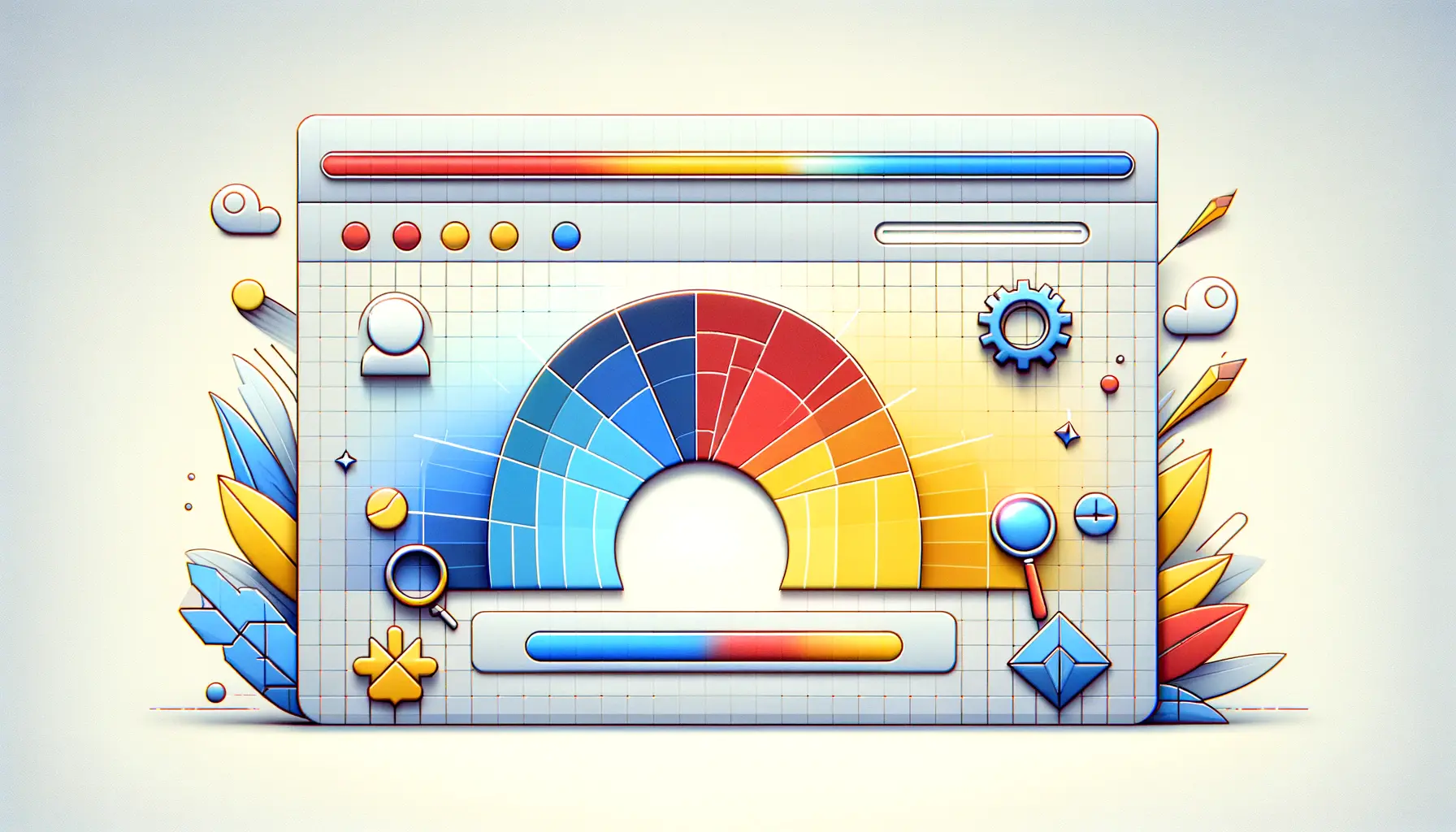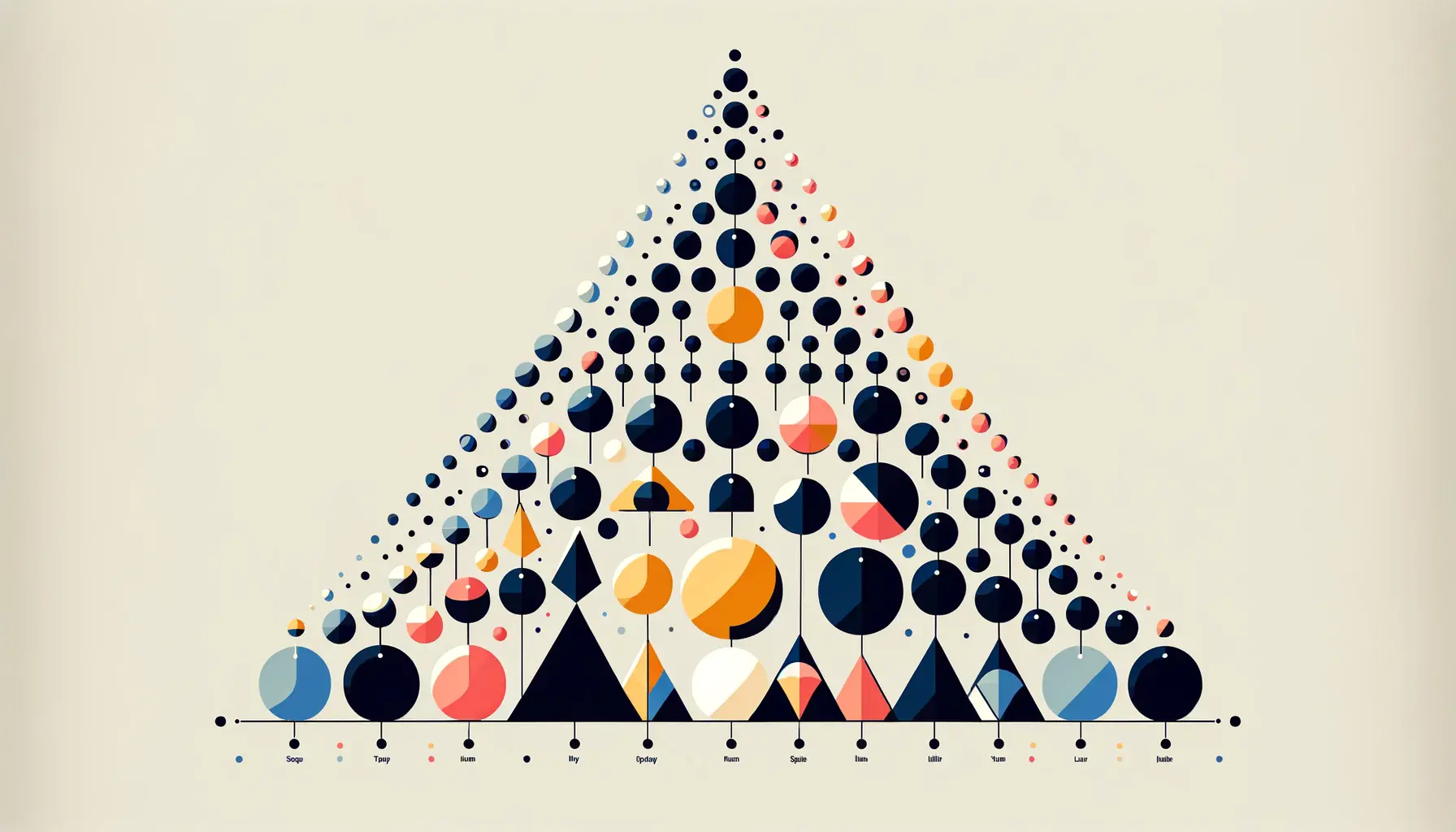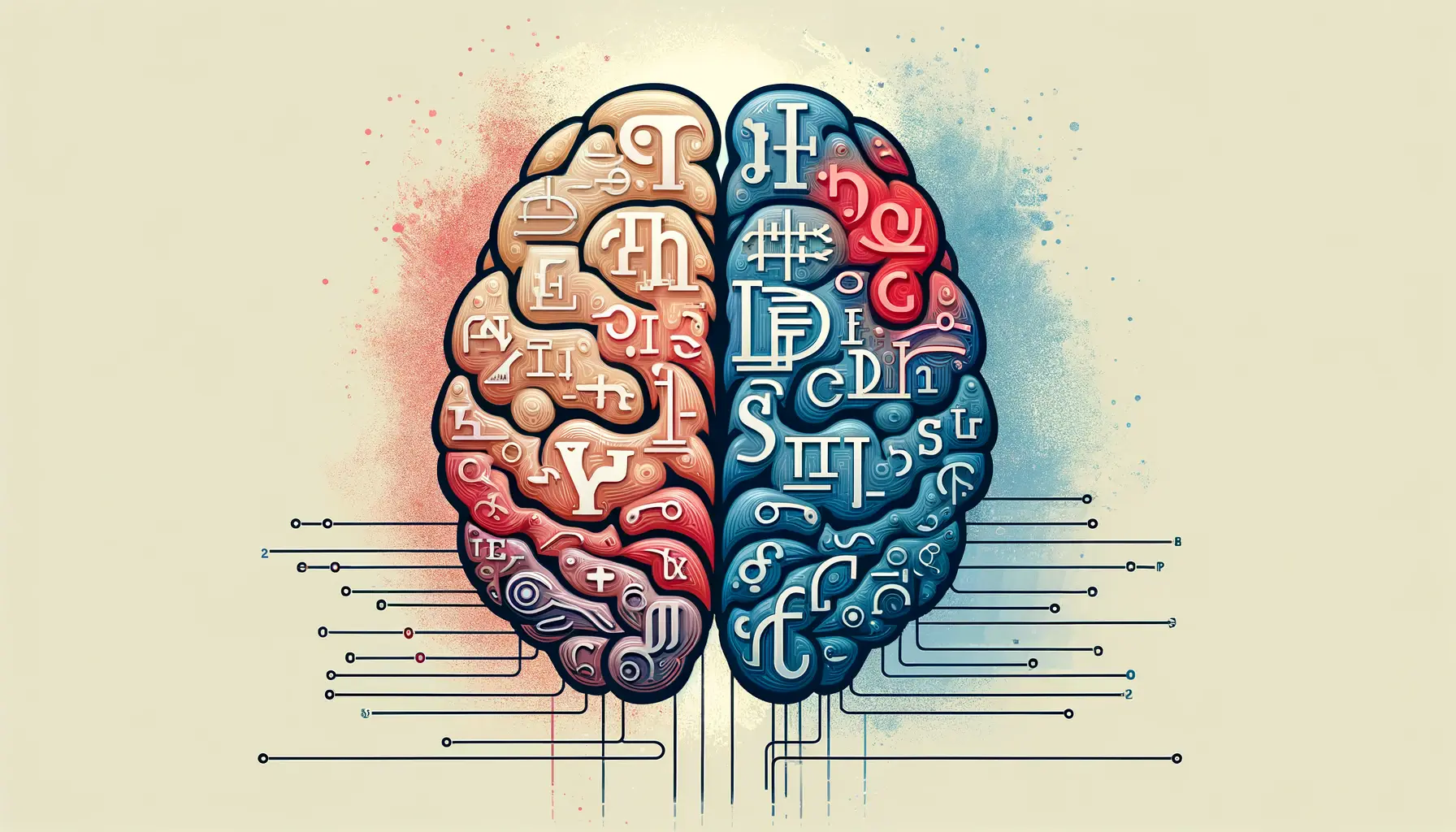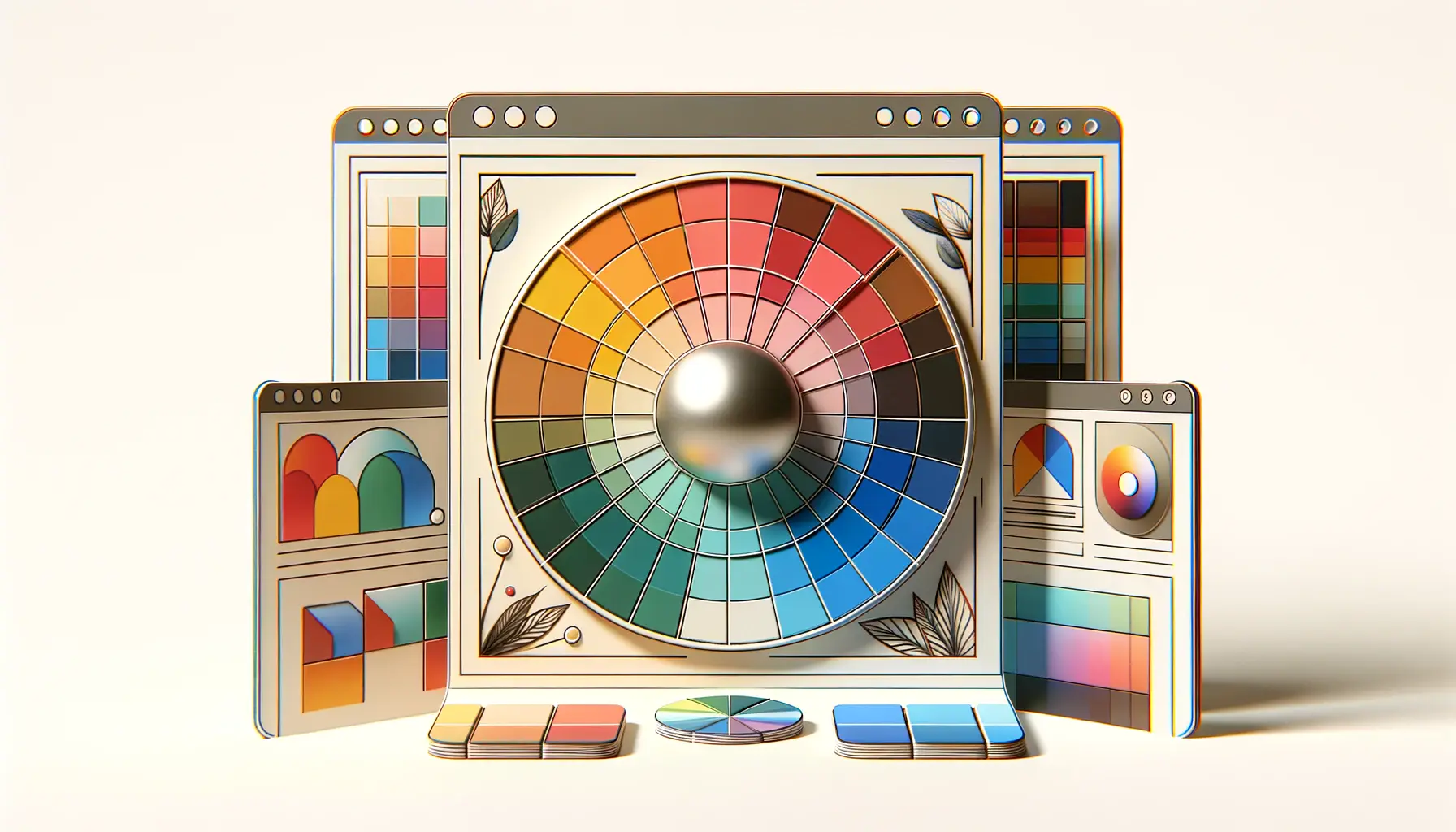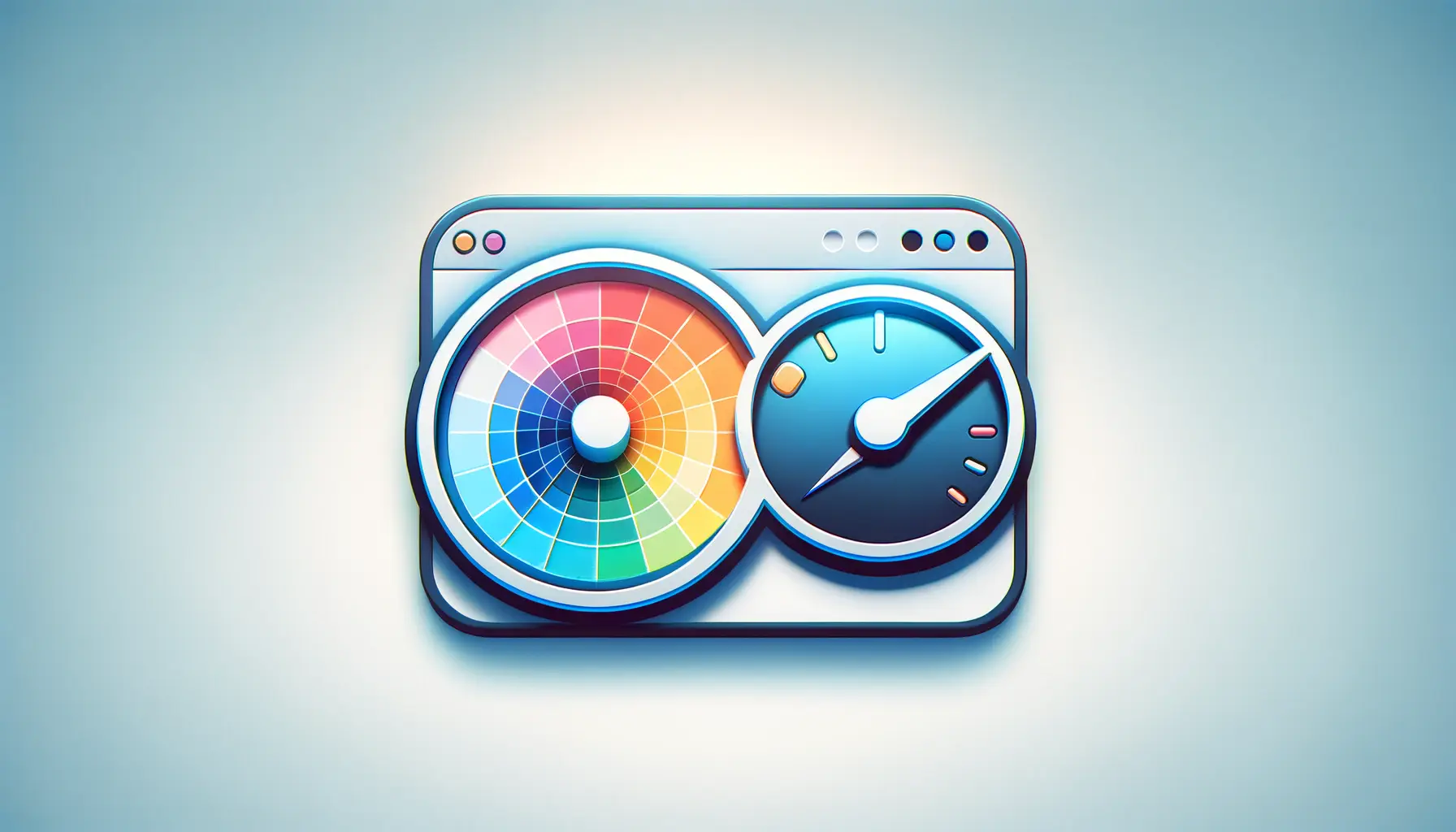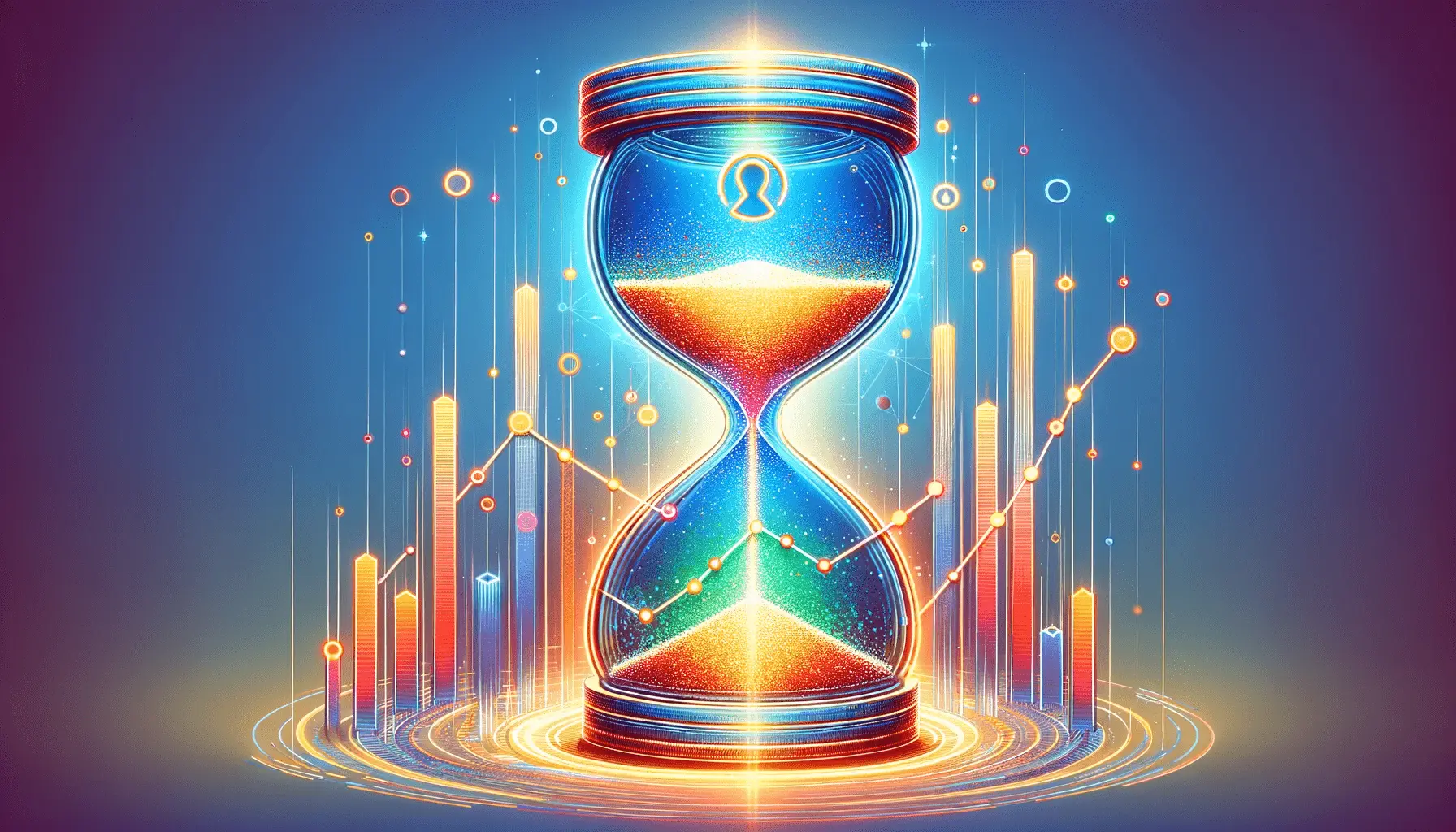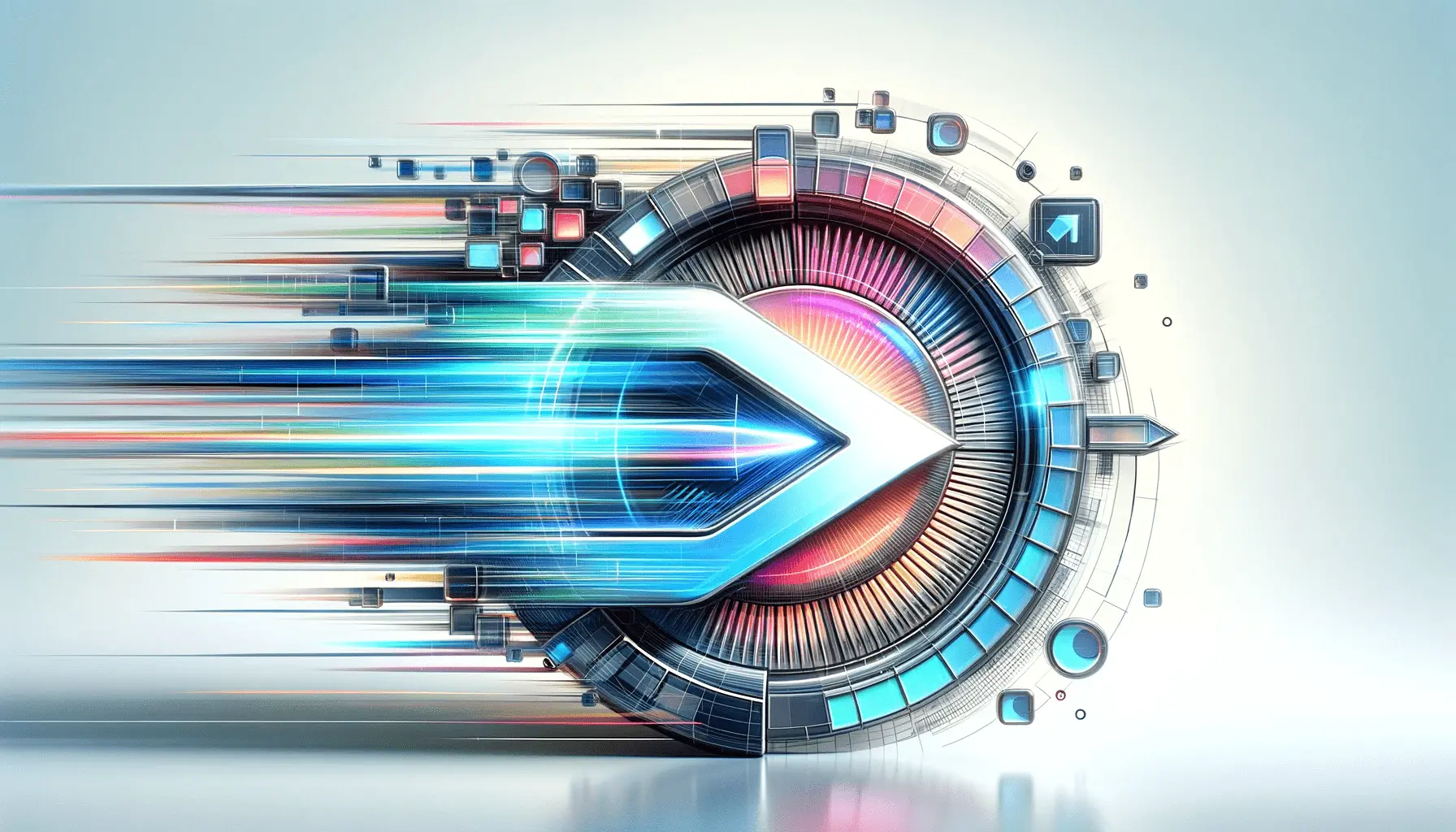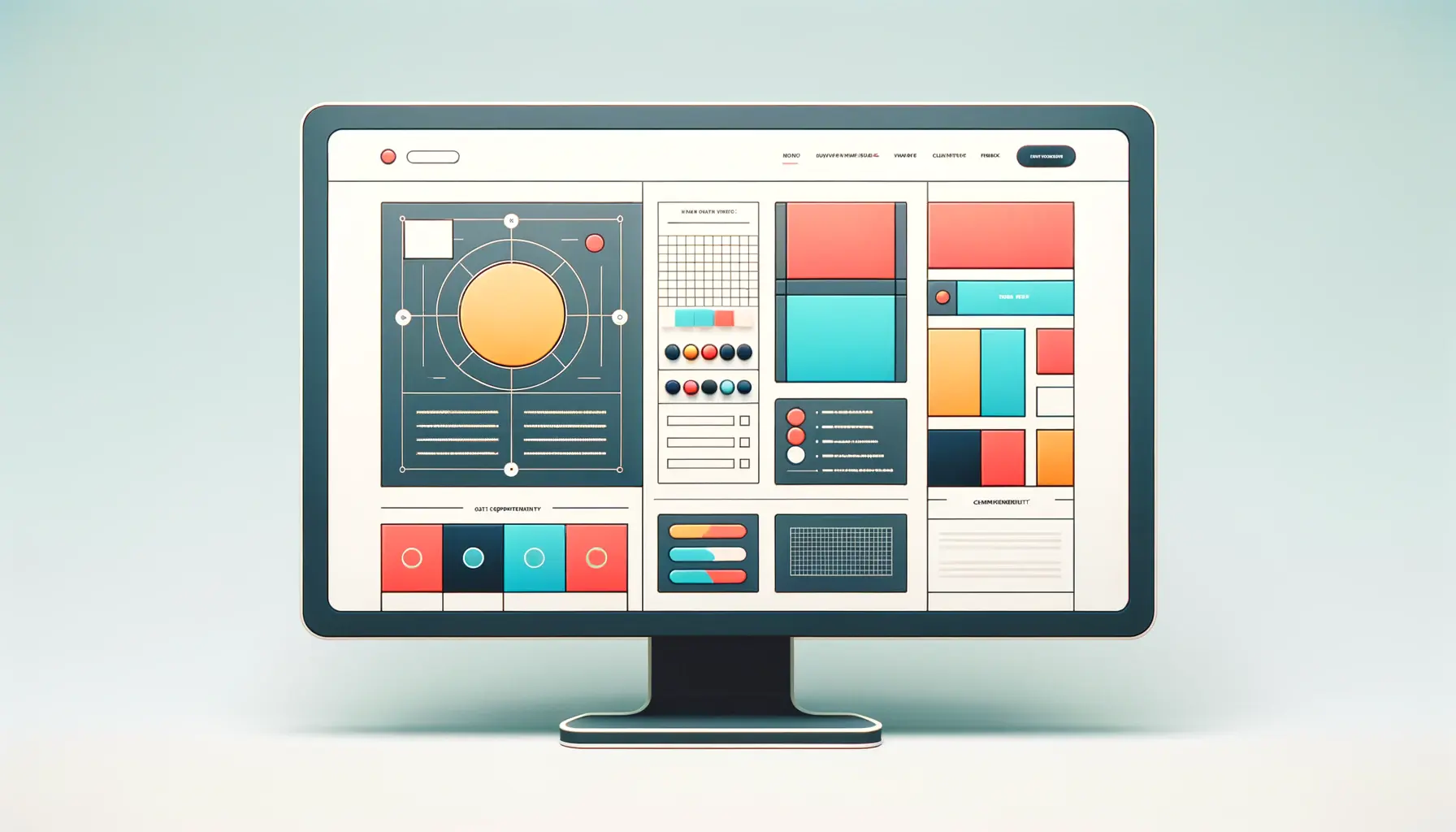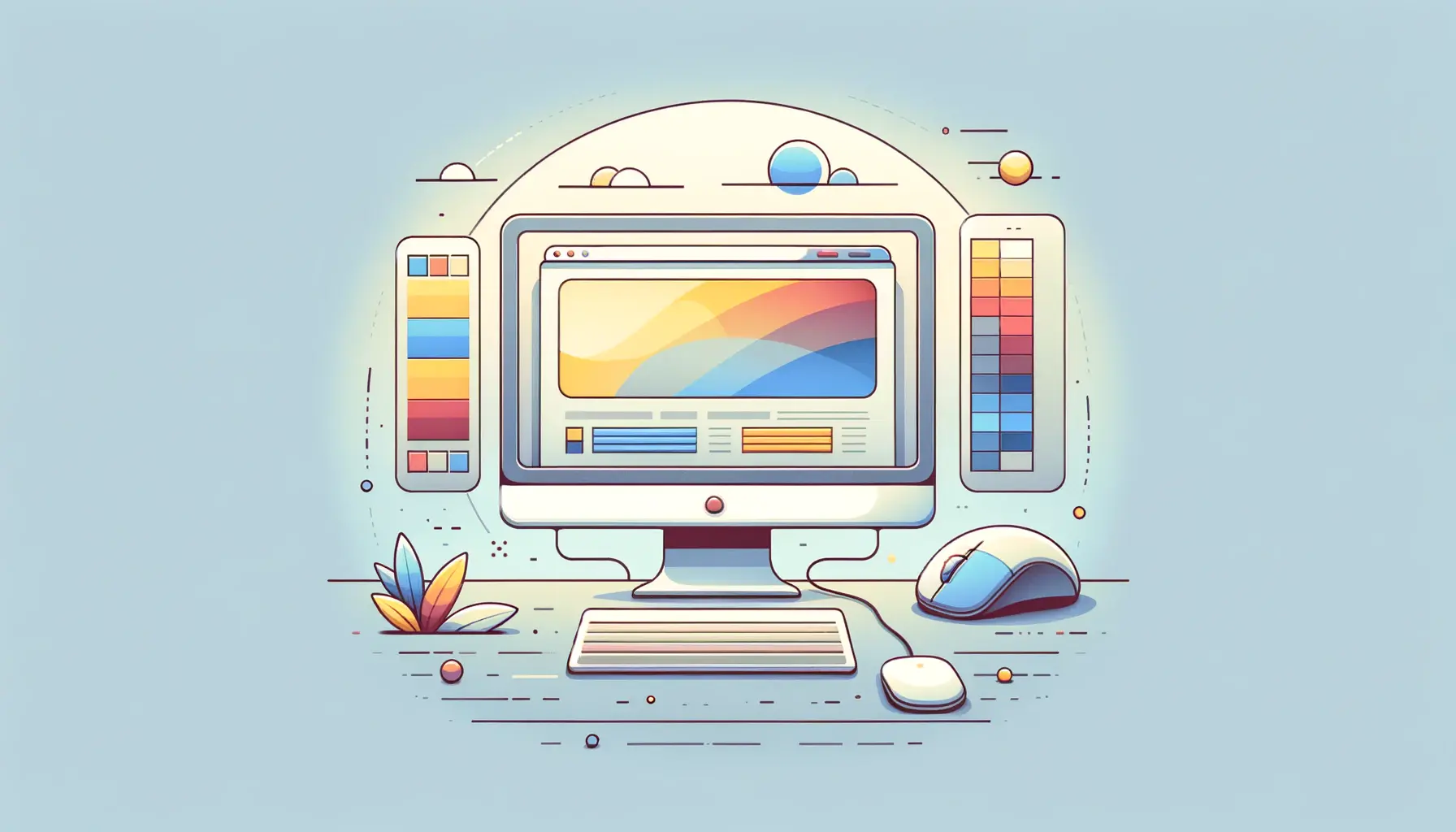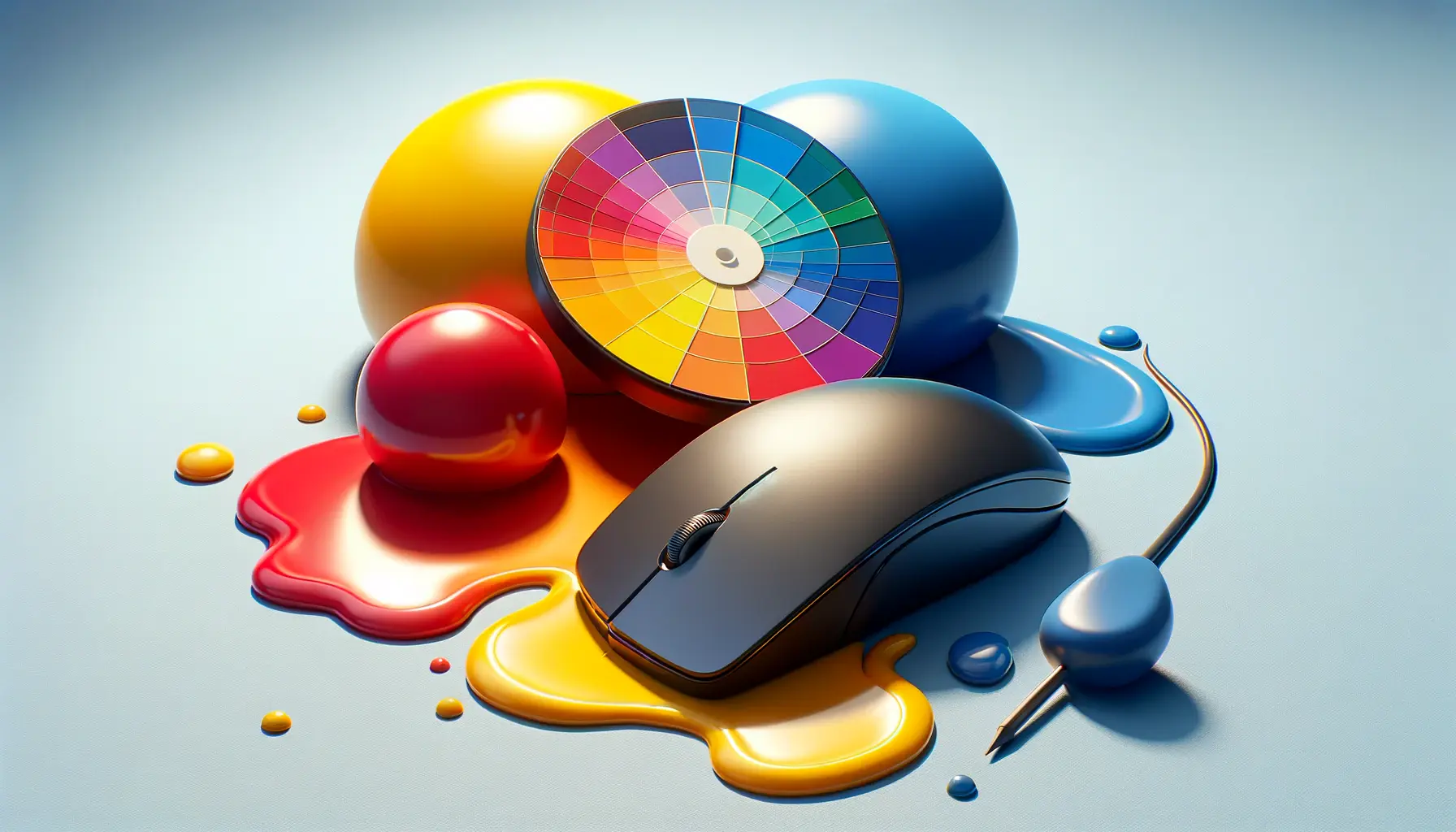The digital landscape is constantly evolving, with web design at the forefront of creating engaging and efficient online experiences.
Among the myriad of factors influencing website performance, color usage in web design plays a pivotal role, often overlooked by many.
This article delves into the intricate relationship between color theory and website load time, offering insights into how strategic color choices can significantly enhance web performance.
By understanding the impact of colors, designers can create visually appealing sites without compromising on speed, ensuring a seamless user experience.
Efficient color use in web design is not just about aesthetics; it’s a strategic approach to improve website load times, a critical factor in user engagement and SEO rankings.
The main keyword, “load,” emphasizes the importance of website speed, where even a second’s delay can lead to decreased user satisfaction and lost revenue.
This article explores the nuances of Web Design Color Theory, shedding light on how colors can be optimized to boost website performance while maintaining visual integrity and brand identity.
- Understanding Color Theory in Web Design
- Strategies for Efficient Color Use
- Color Psychology and User Experience
- Technical Aspects of Color Optimization
- Case Studies: Color Optimization in Action
- Future Trends in Color Optimization
- Integrating Color Optimization with SEO and User Engagement
- Conclusion: The Power of Color in Web Design
- FAQs on Improving Load Time with Color Optimization
Understanding Color Theory in Web Design
Color theory is a cornerstone of web design, influencing how users perceive and interact with a website.
It goes beyond mere color selection, encompassing the psychological effects of colors, their combinations, and the overall visual harmony they create.
In the context of web design, color theory is applied to enhance user experience, convey brand messaging, and now, as we’re exploring, to improve website load times.
At its core, color theory in web design is about balance.
The right combination of hues, saturation, and brightness can create a visually appealing interface that draws users in.
However, the efficiency of color use also affects the technical performance of a website.
For instance, the choice of high-resolution images and complex color schemes can significantly increase page load times, negatively impacting user experience.
By applying principles of color theory, designers can select colors that not only resonate with their brand identity but also contribute to faster loading websites.
Impact of Color Choices on Load Time
The selection of colors and their implementation can have a profound impact on a website’s load time.
Using a broad palette of colors might seem appealing from a design perspective, but it can lead to increased page weight and longer load times.
This is because each color, especially when used in images or graphics, adds to the data size that needs to be downloaded by the browser.
Conversely, a minimalist color scheme, with fewer colors, can reduce file sizes and improve load times, demonstrating the direct link between color use and website performance.
Moreover, the format and optimization of colored elements play a crucial role.
For example, vector graphics, which are often used for logos and simple images, can be more color-efficient than raster images.
They maintain quality at any size, leading to better load times.
Additionally, the use of CSS for coloring elements such as backgrounds and fonts instead of images can further reduce load times, showcasing the importance of color-related decisions in web design.
Optimizing color use is not just about choosing the right shades; it’s also about implementing them in a way that enhances website performance without sacrificing design quality.
Strategies for Efficient Color Use
Adopting efficient color use in web design is crucial for enhancing website load times while ensuring the site remains visually appealing.
This involves strategic planning from the initial design phase through to the final implementation.
Here are key strategies that can be employed to optimize color use for better web performance.
Choosing a Limited Color Palette
One of the most effective strategies for improving website load time is to limit the color palette used across the site.
A minimalist approach to color selection can significantly reduce the complexity and size of design elements, leading to faster load times.
Here’s how to implement this strategy:
- Select Core Colors: Choose a few core colors that reflect your brand and use them consistently throughout the website. This not only aids in brand recognition but also reduces the data needed to render the site.
- Use Shades and Tints: Instead of adding more colors, use shades (darker versions) and tints (lighter versions) of your core colors to add variety without increasing the number of colors used.
Optimizing Images and Graphics
Images and graphics are often the largest contributors to page size, directly affecting load times.
Optimizing these elements for efficient color use is essential:
- Image Compression: Use tools to compress images without losing quality, reducing their file size and improving load times.
- Color Indexing: For images with a limited color palette, use color indexing to reduce the number of colors in the image, significantly decreasing its size.
- Vector Graphics: Where possible, use vector graphics instead of raster images. Vectors are not only scalable but also typically have smaller file sizes, especially for designs with few colors.
Utilizing CSS and HTML5
Modern web technologies like CSS and HTML5 offer powerful features for efficient color use, enabling designers to create visually rich experiences with minimal impact on load times:
- CSS Gradients: Instead of using images for gradients, CSS3 allows for smooth gradients that are rendered by the browser, reducing the need for image downloads.
- HTML5 Canvas: For dynamic graphics, the HTML5 Canvas element can be a more efficient alternative to traditional images, especially when dealing with interactive or animated elements.
Incorporating these strategies into your web design process can significantly improve your website’s load time, enhancing user experience and SEO performance.
Color Psychology and User Experience
Color psychology plays a pivotal role in web design, influencing how users perceive and interact with a website.
The colors chosen for a website can evoke specific emotions, influence perceptions of brand identity, and significantly impact user behavior.
Understanding the psychological effects of colors is essential for creating a website that not only looks good but also aligns with the desired user experience.
Emotional Impact of Colors
Different colors can evoke different emotions and associations.
For instance, blue is often associated with trust and reliability, making it a popular choice for financial institutions.
Green, on the other hand, is associated with nature and growth, and is frequently used by eco-friendly brands.
Selecting colors that align with the emotional tone of your brand can enhance user engagement and brand perception.
- Red: Energy, urgency, and excitement. Often used for call-to-action buttons or sale announcements.
- Yellow: Optimism and attention-grabbing. Can be used to highlight important features or information.
Color and User Actions
The use of color can also guide user actions and decision-making on a website.
For example, contrasting colors for buttons and calls to action (CTAs) can make them stand out on the page, encouraging clicks.
Similarly, using a consistent color scheme for links and navigation aids can improve usability and guide users through your site more effectively.
- Contrast for Visibility: Ensure that there is sufficient contrast between text and background colors to improve readability and accessibility.
- Color Coding: Use color coding to categorize information, making it easier for users to navigate and find what they’re looking for.
Improving Load Times Through Color Psychology
While the psychological impact of colors is well-documented, its influence on website load times is less direct but equally significant.
By understanding how colors affect user perception and behavior, designers can create more efficient websites.
For example, using a strategic color scheme that requires fewer images or complex graphics can reduce page weight and improve load times, all while enhancing the user experience through thoughtful color psychology.
- Minimalist Color Schemes: A minimalist approach, informed by color psychology, can create a clean, efficient, and emotionally resonant website.
- Strategic Use of Color for Emphasis: Instead of relying on heavy graphics, use color strategically to draw attention to key elements, reducing the need for additional visual content.
Leveraging color psychology in web design not only improves the aesthetic appeal and user engagement but also contributes to faster load times by enabling more efficient design choices.
Technical Aspects of Color Optimization
The technical optimization of colors in web design is a critical aspect that directly impacts load times and overall website performance.
This involves understanding and applying various techniques and technologies to ensure that color usage is both effective and efficient.
By focusing on the technical underpinnings of color optimization, designers and developers can significantly enhance the speed and user experience of their websites.
Color Depth and File Formats
Color depth and the choice of file formats are fundamental considerations in optimizing web images for speed.
Color depth refers to the number of bits used to represent the color of a single pixel, with higher color depths offering a wider range of colors at the cost of larger file sizes.
Balancing color depth with the necessity for speed can lead to significant improvements in load times.
- Reducing Color Depth: For many web applications, reducing the color depth of images can drastically decrease file sizes without a noticeable loss in quality, especially for icons and graphics.
- Choosing the Right File Format: JPEG, PNG, and WebP are common file formats, each with its own advantages. WebP, for example, offers superior compression and quality characteristics compared to traditional formats, making it an excellent choice for web images.
Efficient Use of CSS for Coloring
Modern web development practices advocate for the use of CSS to apply colors to website elements wherever possible.
This approach not only reduces the need for image-based elements but also allows for more flexibility in design and faster loading times.
- CSS Color Properties: Utilize CSS properties to set text, background, and border colors. This method is much more efficient than using images to achieve the same effect.
- Advanced CSS Techniques: Techniques such as CSS gradients and filters can create visually appealing effects without the overhead of additional image files, further improving load times.
Optimizing Color for Web Accessibility
Optimizing color use is not just about aesthetics and performance; it also encompasses ensuring accessibility for all users, including those with visual impairments.
Web accessibility standards, such as the Web Content Accessibility Guidelines (WCAG), provide specific recommendations for color contrast and usage to ensure content is accessible to everyone.
- Contrast Ratios: Ensuring high contrast ratios between text and background colors improves readability for users with visual impairments and contributes to a more inclusive web experience.
- Color Not Being the Sole Information Source: Design elements should not rely on color alone to convey information, ensuring that users who cannot perceive color differences can still understand and navigate the website.
Technical optimization of colors is a multifaceted approach that encompasses file formats, CSS usage, and accessibility considerations, all of which contribute to faster load times and a better user experience.
Case Studies: Color Optimization in Action
Exploring real-life case studies of color optimization in web design provides valuable insights into the practical application and benefits of these strategies.
These examples highlight how businesses and designers have successfully improved website load times and user experience through thoughtful color use, offering inspiration and actionable lessons for others in the field.
Minimalist Color Scheme Implementation
A notable online retailer redesigned their website with a focus on a minimalist color scheme, significantly reducing the number of colors used across the site.
This approach not only aligned with their brand identity but also decreased their website’s load time by 20%.
The reduction in color complexity allowed for simpler and more efficient coding and image optimization, directly impacting the site’s performance and user engagement rates.
- Outcome: Improved user engagement and increased conversion rates, demonstrating the effectiveness of minimalist color schemes in enhancing web performance.
- Lesson: A carefully selected color palette can achieve both aesthetic goals and technical efficiency, proving that less can indeed be more in web design.
Optimization of Images and Graphics
An educational platform experienced a noticeable improvement in page load times after optimizing their images and graphics for color.
By reducing color depth and converting images to more efficient formats like WebP, they were able to maintain visual quality while significantly decreasing file sizes.
Additionally, the use of CSS for backgrounds and icons instead of image files further contributed to the speed enhancements.
- Outcome: The platform saw a 30% reduction in average page load time, leading to a lower bounce rate and higher user satisfaction.
- Lesson: Effective image and graphic optimization strategies are crucial for balancing visual quality and website performance.
Adopting Advanced CSS Techniques
A tech startup redesigned their website using advanced CSS techniques, such as gradients and animations, to replace heavy image-based designs.
This not only preserved the site’s dynamic and modern feel but also resulted in a 25% improvement in load time.
The use of CSS allowed for colors and effects to be rendered efficiently by browsers, minimizing the need for external image files.
- Outcome: The startup’s website achieved faster load times while enhancing the visual experience, leading to increased visitor retention and engagement.
- Lesson: Leveraging CSS for design elements can significantly improve website performance without compromising on aesthetics.
These case studies demonstrate the tangible benefits of color optimization in web design, showcasing how strategic color use can lead to better performance, improved user experience, and ultimately, business success.
Future Trends in Color Optimization
The landscape of web design and color optimization is ever-evolving, with new technologies and approaches continuously emerging.
As we look to the future, several trends are set to shape how colors are used in web design, influencing both aesthetic appeal and website performance.
Understanding these trends is crucial for designers and developers aiming to stay ahead in creating efficient, engaging, and forward-thinking websites.
Adaptive Colors for Enhanced Personalization
One of the most exciting trends is the move towards adaptive color schemes that change based on user preferences or environmental conditions.
This approach not only offers a more personalized user experience but also has the potential to optimize load times by dynamically adjusting to simpler color schemes for faster rendering when needed.
- User-Centric Design: Websites that adapt their color schemes to user settings, such as dark mode preferences, enhance accessibility and comfort, potentially reducing the need for additional images or color variations.
- Environmental Adaptation: Color schemes that adjust based on ambient light conditions can improve readability and user experience without compromising load times.
AI and Machine Learning in Color Selection
The integration of AI and machine learning technologies in web design is beginning to influence color optimization.
These technologies can analyze user data and preferences to suggest optimal color schemes that not only appeal to the target audience but also enhance performance by predicting the most efficient color combinations.
- Personalization at Scale: AI can help tailor color schemes to individual user preferences, improving engagement while maintaining efficient load times.
- Performance Optimization: Machine learning algorithms can identify patterns in user behavior and adjust color usage accordingly to optimize website performance.
Sustainable Web Design
As awareness of digital sustainability grows, the role of color optimization in reducing the environmental impact of websites is gaining attention.
Efficient color use can contribute to lower data transfer volumes and energy consumption, aligning web design with broader sustainability goals.
- Energy-Efficient Design: Minimalist color schemes and optimized images reduce the amount of data processed and transmitted, contributing to lower energy consumption.
- Reducing Digital Footprint: By focusing on performance and efficiency, sustainable web design practices, including color optimization, can help reduce the digital carbon footprint of websites.
The future of color optimization in web design is poised to be more dynamic, personalized, and sustainable, reflecting broader trends in technology and society. By embracing these trends, designers can create websites that are not only visually appealing but also efficient, engaging, and environmentally responsible.
Integrating Color Optimization with SEO and User Engagement
In the digital age, the success of a website is largely determined by its visibility and the engagement it generates.
While the aesthetic appeal of a site is crucial, its performance in search engine rankings and its ability to captivate and retain users are equally important.
Integrating color optimization strategies with SEO (Search Engine Optimization) and user engagement tactics can create a powerful synergy, enhancing a website’s overall effectiveness.
Color Optimization and SEO
Search engines increasingly value user experience as a ranking factor, and website speed is a critical component of this.
Efficient color use can significantly reduce load times, indirectly boosting SEO rankings.
Moreover, the strategic use of colors can improve content readability and hierarchy, making it easier for search engines to understand and index content.
- Load Time: A faster-loading website, aided by efficient color use, can improve its search engine ranking, as speed is a known ranking factor.
- Content Structure: Using color to highlight headings, links, and key information can enhance content structure, making it more SEO-friendly.
Enhancing User Engagement Through Color
Colors not only attract attention but can also influence mood and behavior, making them a powerful tool for increasing user engagement.
A well-thought-out color scheme can make a website more appealing and encourage users to spend more time exploring its content.
Additionally, using colors to create a clear and intuitive navigation system can significantly improve the user experience, leading to higher engagement and conversion rates.
- Emotional Connection: Selecting colors that evoke positive emotions can enhance user engagement and foster a stronger connection with the brand.
- Navigation and Usability: Employing contrasting colors for CTAs and navigation elements can guide users through the site more effectively, increasing the likelihood of conversion.
Case Study: Color Optimization for Increased Engagement
A case study involving a lifestyle blog illustrates the impact of color optimization on user engagement and SEO.
By simplifying its color scheme and optimizing image use, the blog saw a 40% increase in page views and a 15% decrease in bounce rate.
Additionally, the site experienced an improvement in its SEO rankings, attributed to faster load times and a more structured content presentation.
- Outcome: The blog’s strategic use of color not only enhanced its aesthetic appeal but also its performance in search rankings and user engagement metrics.
- Lesson: This case underscores the importance of integrating color optimization with SEO and user engagement strategies to maximize a website’s success.
Integrating color optimization with SEO and user engagement strategies is essential for creating a successful website. By focusing on efficient color use, websites can improve load times, enhance user experience, and achieve better search engine rankings, leading to increased visibility and engagement.
Conclusion: The Power of Color in Web Design
In the realm of web design, the strategic use of color is not just an aesthetic choice but a pivotal factor in enhancing website performance, particularly in terms of load times.
This article has traversed the spectrum of considerations, from the psychological impact of color to the technical nuances of optimization, illustrating how color influences both user experience and technical efficiency.
The integration of color optimization within web design practices offers a dual advantage: it not only elevates the visual appeal but also significantly boosts website speed, contributing to improved SEO rankings and user engagement.
Key Takeaways
The journey through the various facets of color use in web design underscores several key insights:
- Efficient color use can drastically reduce website load times, enhancing user satisfaction and engagement.
- The psychological effects of color play a crucial role in shaping user perceptions and actions, making color a powerful tool for improving user experience.
- Technical strategies for color optimization, including the selection of file formats and the use of CSS, are essential for improving website performance.
- Emerging trends in color optimization, such as adaptive colors and AI-driven color selection, point towards a future where personalization and efficiency are paramount.
- Integrating color optimization with SEO and user engagement strategies is vital for creating a successful online presence.
Embracing Color Optimization for Future Success
As we look to the future, the role of color in web design is set to become even more significant.
With the advent of new technologies and the increasing importance of digital sustainability, designers and developers must continue to innovate and adapt their approaches to color use.
By doing so, they can create websites that are not only visually stunning but also optimized for speed, accessibility, and user engagement.
The strategic use of color, informed by an understanding of its psychological and technical aspects, will remain a cornerstone of effective web design.
In conclusion, the efficient use of color in web design transcends aesthetic considerations, embodying a critical element in optimizing load times and enhancing overall website performance.
As the digital landscape evolves, the ability to skillfully navigate the complexities of color theory and its application in web design will be indispensable for designers aiming to deliver engaging, efficient, and successful websites.
Quality web design is key for a great website! Check out our service page to partner with an expert web design agency.
FAQs on Improving Load Time with Color Optimization
Explore common questions about enhancing website performance through strategic color use in web design.
Color choice impacts load time by affecting file sizes, especially with images and graphics, where optimized color use can significantly reduce data size.
Yes, a limited color palette simplifies design elements, reducing the overall size of images and CSS, which can lead to faster load times.
Formats like PNG and WebP offer efficient compression with good quality, making them suitable for fast-loading websites without sacrificing color depth.
Using CSS for colors and gradients instead of images reduces HTTP requests and file sizes, enhancing load times and color efficiency.
Color psychology influences emotions and behaviors, making strategic color use crucial for improving engagement and user experience.
Yes, various tools and software are available to help designers choose and optimize color schemes for better performance and aesthetics.
Color is vital for accessibility, with high contrast and color differentiation aiding users with visual impairments to navigate and understand content.
On mobile devices, optimized color use is crucial for fast load times due to limited bandwidth and processing power, enhancing user experience.
